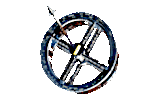
A spacecraft mission
to a Space Station begins with its launch from earth and ends when the spacecraft either returns to Earth or is deliberately destroyed by a controlled return into the Earth's atmosphere.
The duration of a mission varies, depending on the craft used and purpose of the mission. As station technology has improved the mission durations have generally increased.
When stations are occupied there is normally at least one crew spacecraft permanently docked to act as an emergency escape vehicle. For long duration missions this craft is regularly replaced with 'fresh' spacecraft and the old one returns to earth.
Most cargo only craft remain docked until the docking port is required. They are then de-orbited and destroyed.
The mission of a spacecraft to the station has the following main steps; launching from Earth to orbit, rendezvous with the station, docking to the station, un-docking from the station and de-orbiting, landing intact or destruction. This section gives an overview of these steps.
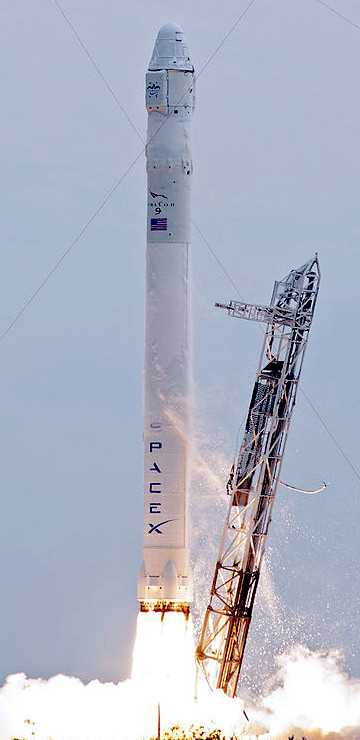
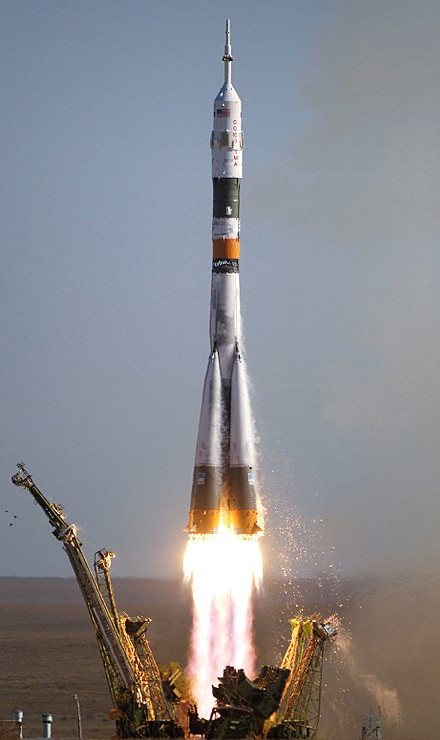
The first step is to launch the spacecraft and overcome the Earth's gravity so that it can be placed in a similar orbit to the station.
The launching method varies depending on the size and type of craft being launched. All launch vehicles, however, use either liquid or solid fuelled rocket engines.
The launch vehicles are also generally multi-staged. The first stage usually use a number of large engines to initially lift the weight of the spacecraft, launch vehicle and fuel.
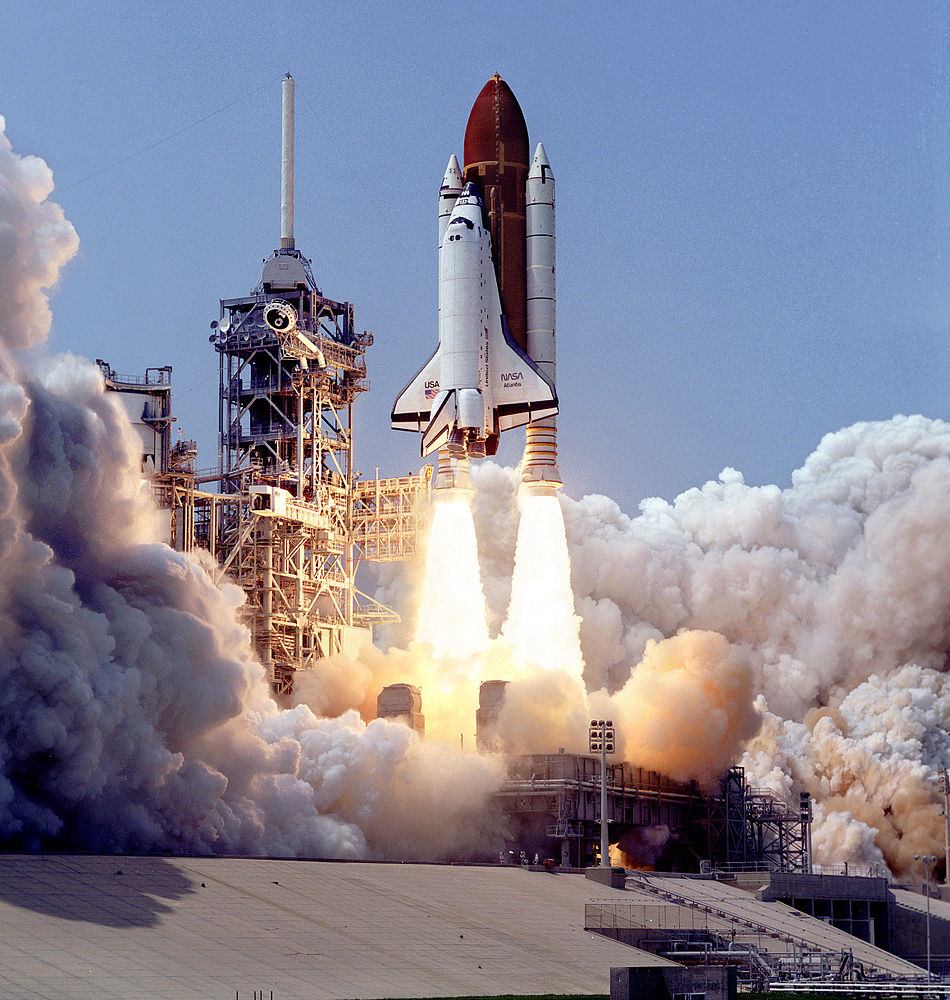
When the first stage fuel is fully used, the first stage, including fuel tanks is discarded to be destroyed or returned to Earth for re-use.
The craft is then lighter so subsequent stages can use smaller engines. These stages are similarly discarded until only the spacecraft remains in orbit. It then uses its smaller manoeuvering engines for the rendezvous operation.
Reference: Wikipedia - Launch vehicle
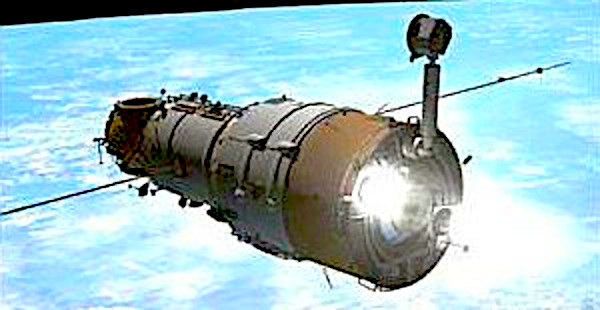
Once the spacecraft is in orbit it needs to catch up and match velocity and orbit with the station.
The launch vehicle can only place the spacecraft in particular orbits relative to the launching place on Earth. Spacecraft then use their own rocket engines to catch up to the station and match its orbital altitude and speed. The craft is then motionless, relative to the station, and can be safely docked.
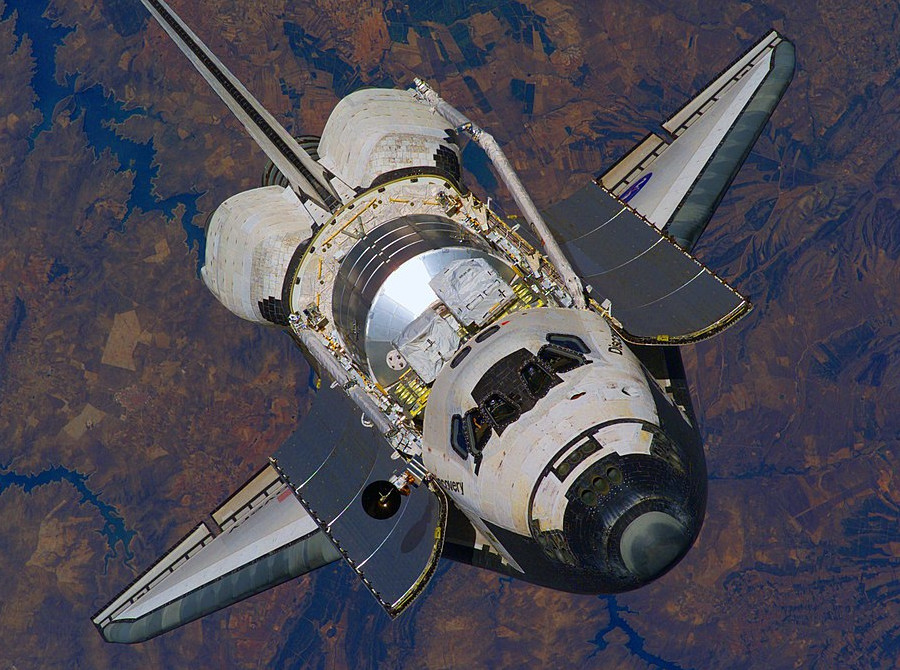
Some spacecraft, such as station module, may not have their own engines. These usually have an expendable engine unit, called a tug, attached. After docking the tug is separated and de-orbited to destruction.
Alternatively when the Space Shuttle was in service, it was used to deliver some of these modules.
Reference: Wikipedia - Space Rendezvous
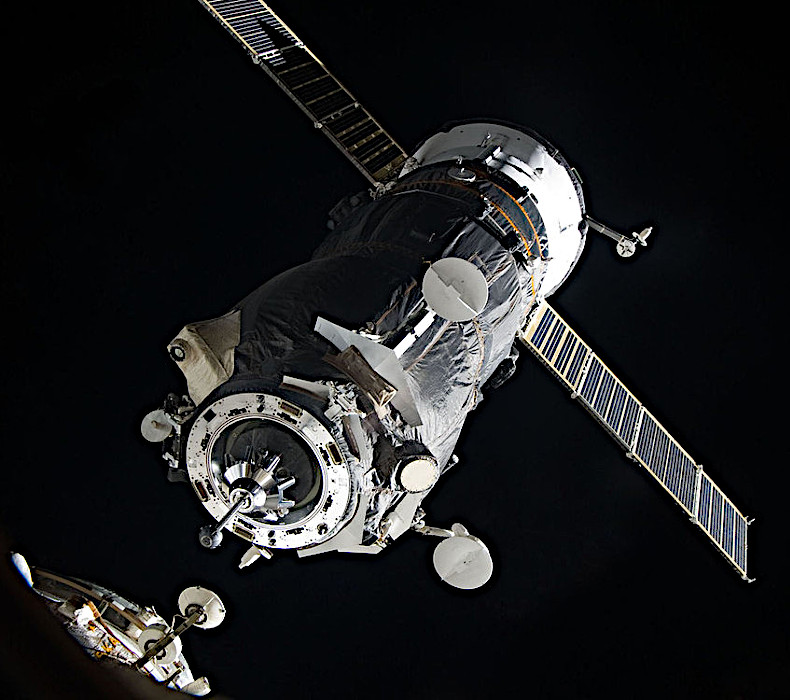
Two methods are used to attach the spacecraft securely to the station with an air-tight seal.
Powered Docking - Using remote control from the station or Earth, small rocket engines (thrusters) on the craft are used to guide it to the docking point. After initial contact the docking mechanism pulls the craft in and securely locks it to the station with an air tight seal.
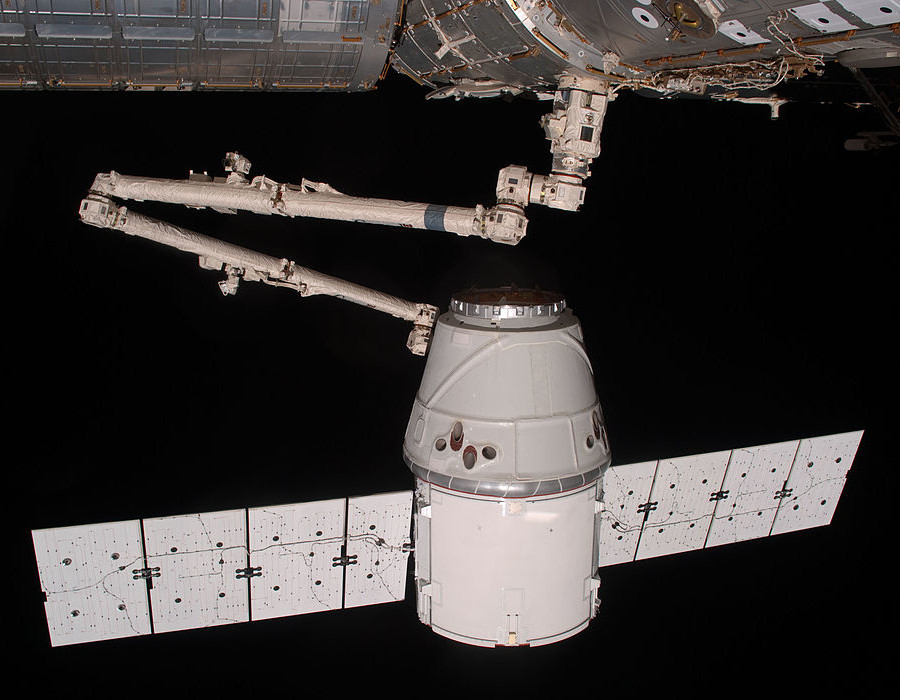
Capture Docking - The station's robot arm is used to grapple a fixture on the craft and move it into the initial docking contact position. This method is only used for the smaller un-piloted craft and station modules.
Modules delivered by the Space Shuttle were lifted from its payload bay by the shuttle's robot arm. They were then handed over to the stations robot arm for final docking.
Reference: Wikipedia - Docking and berthing of spacecraft
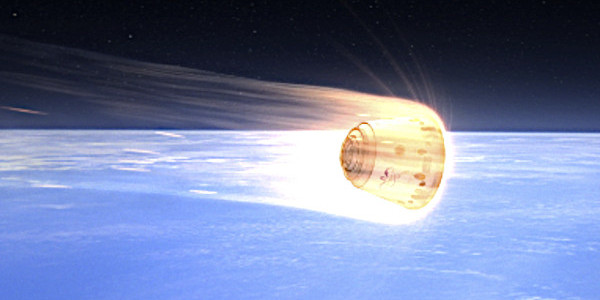
Un-docking is the reverse procedure to docking and uses a similar method. After un-docked the spacecraft uses its thruster to move to a safe distance clear of the station and then uses its main engines to slow down for de-orbit.
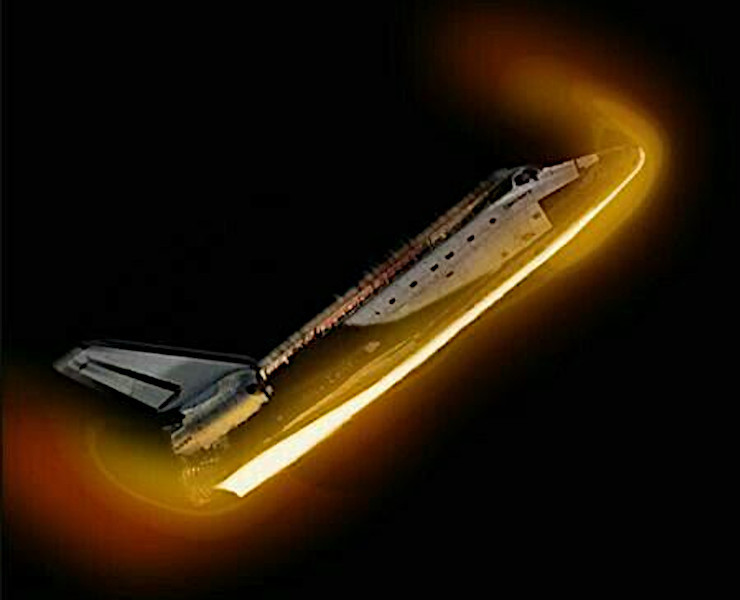
As the spacecraft slows the effect of gravity causes it to lose altitude and enter the Earth's atmosphere.
Reference: Wikipedia - Atmospheric entry
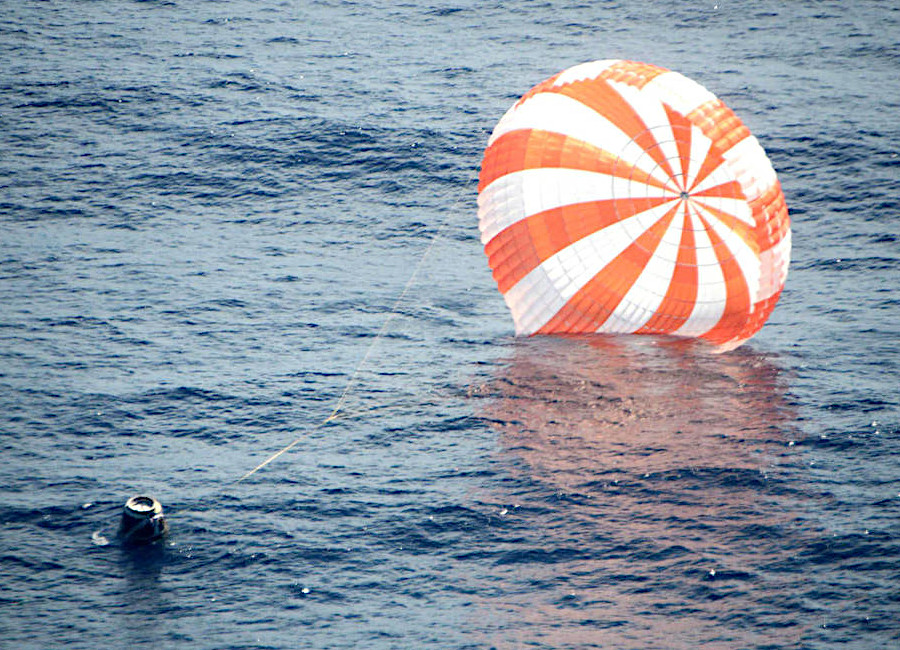
The trajectory of the spacecraft's entry into the atmosphere is determined by the type of craft. If the craft is designed to return to Earth it will enter the atmosphere at a shallow angle to keep it intact during re-entry. These craft have a shield to prevent them from over heating during this period.
Single use spacecraft, such as small cargo craft, use a re-entry trajectory designed to destroy them on entering the Earth's atmosphere. They do not have heat shields and are destroyed by the frictional heat of re-entry.
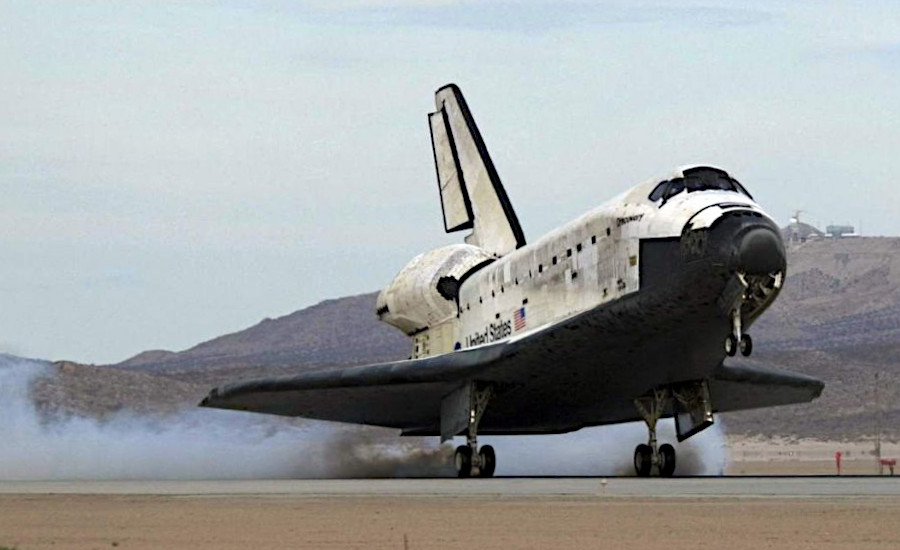
The space shuttles had heat shields and were designed to land like planes and be re-used. Other returning craft usually discard their engine sections and only land the capsule containing crew or cargo. These craft have heat shields on the capsules and land using parachutes. They may land on the ground or at sea.
References: Wikipedia
- Soft landing (aeronautics)
- Splashdown
- Uncontrolled and unprotected reentries
There are three main types of spacecraft missions to a station:
Early space stations consisted of a single module which was launched, un-occupied, by a dedicated launcher rocket and used on-board engines to attain orbit. A combination automation and remote control was used to place it in the correct orbit.
These stations contain a number of habitable modules and support structures which are assembled in orbit. This method is used when the design of the station is too large to be built on Earth and launched into orbit.
Modular stations start with the launch of a core module using a method similar to single module stations. Additional major components, including modules and structures, are then added to the station. These are transported to the station by using dedicated launchers and engines or as cargo in other spacecraft.
The U.S. Space Shuttle is the only craft, so far, capable of transporting large major components. Smaller components have also been transported using the U.S. SpaceX Dragon spacecraft.
Space stations allow personnel to stay in space for longer periods than was possible using standard orbital spacecraft. These station crews need to be safely transported to the station and back to Earth.
Station crew transport spacecraft are therefore based on the existing proven orbital craft. Early versions were simply modified to allow docking with the station, while later craft have been extensively modified for dedicated station use.
Normally At least one crew transport craft remains docked at a station for use as an emergency escape vehicle. For longer duration missions, these need to be regularly replaced with a "fresh" craft of the same type.
Supplies include all those goods needed to provide life support for the crews and to operate and maintain the stations. Regular deliveries are required of consumables such as fuel, water, food, oxygen and spare parts.
Most stations are also working research stations requiring specific equipment and the transport of experiment materials from and to the Earth.
Small amounts of cargo can be transported to the stations with the crews. This was sufficient for the earlier short duration missions. As mission durations increased, dedicated cargo only craft were required for re-supply.
The exception was the U.S. Space Shuttle which was large enough to carry crews and large amounts of supplies.